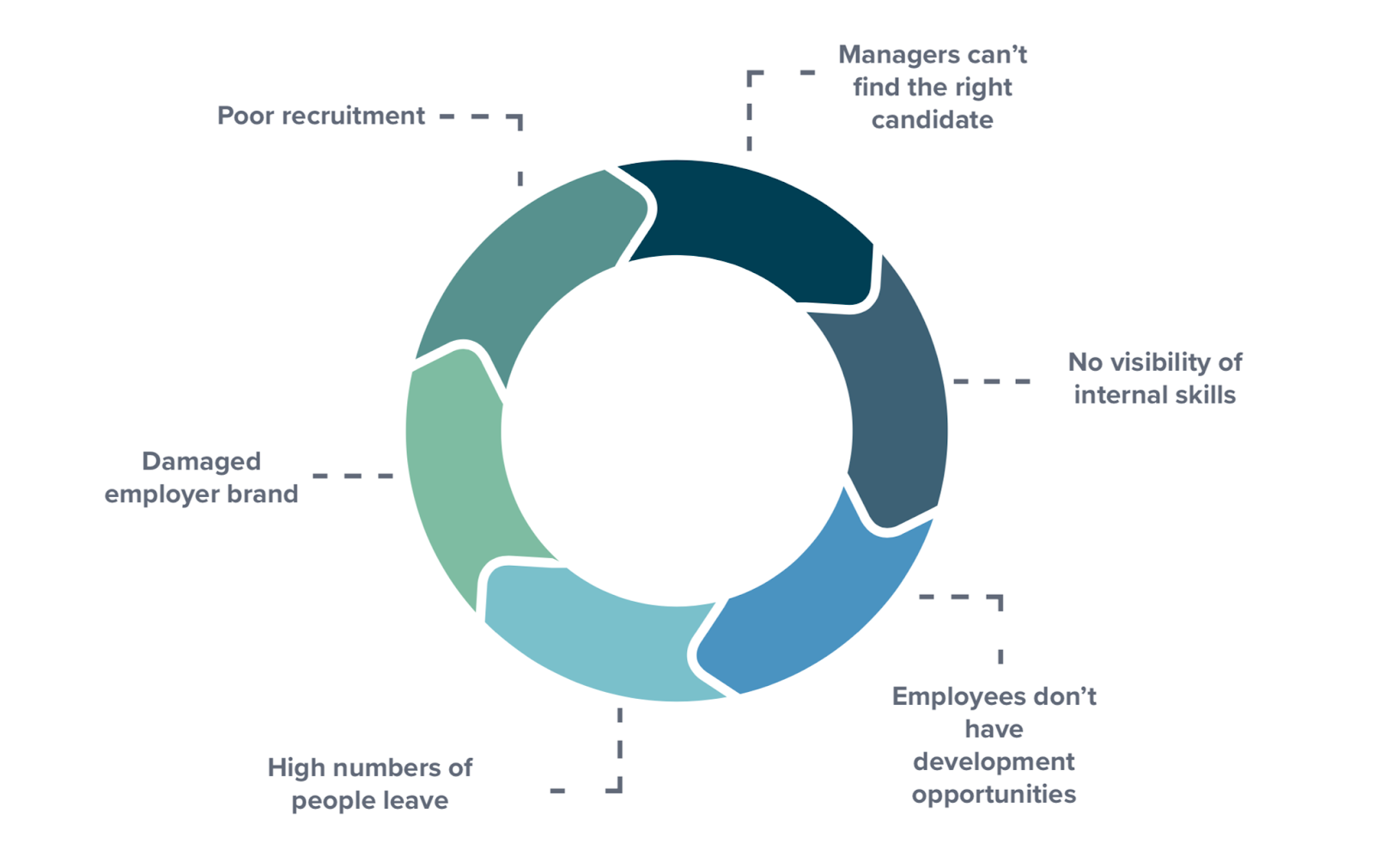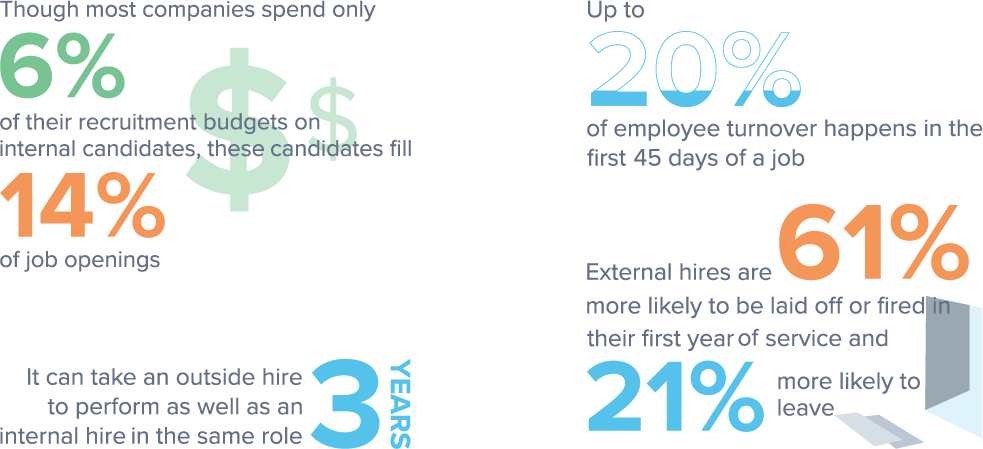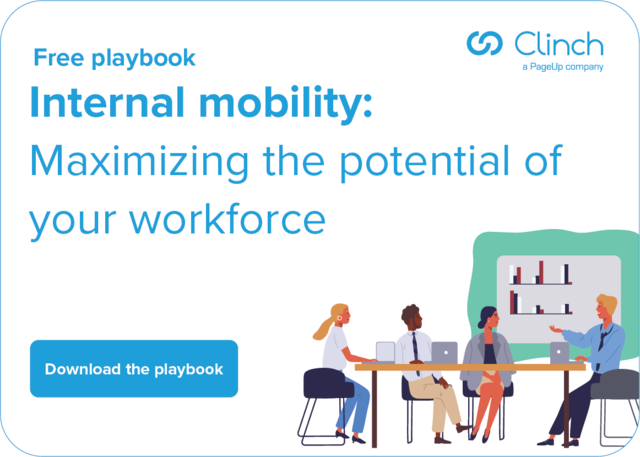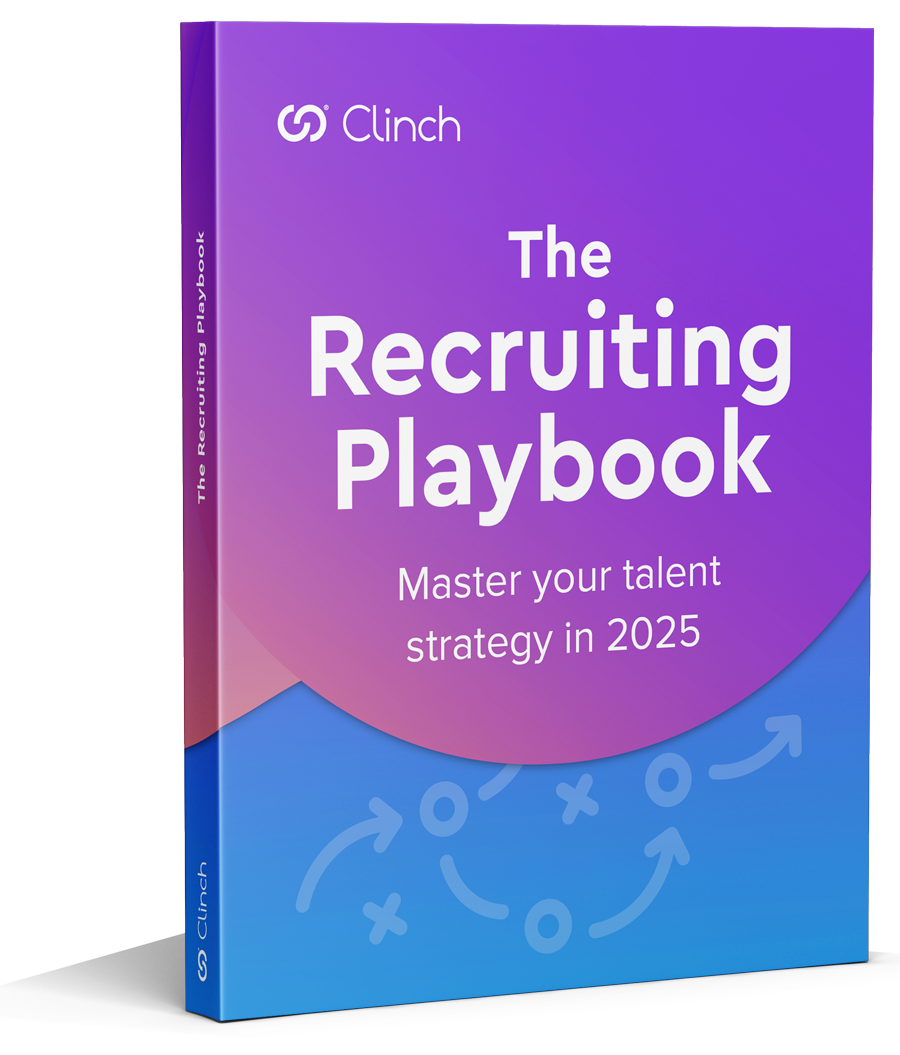In the wake of the COVID-19 pandemic, organizations are fundamentally rethinking their people strategy: whether that’s freezing hiring, standing down their workforce, redeploying staff or hiring to fill critical skill gaps. In this uncertain, rapidly changing landscape, internal mobility is taking center stage.
Internal mobility is a critical component of an organization’s talent strategy. It arms HR teams with the tools to identify their employees’ skill sets and aspirations and deploy or redeploy these internal pools of talent to where they are needed most.
Encouraging a culture of internal mobility and advancement not only elevates your employees so that they are top of mind when a role becomes available. It also supports their career growth and development.
While internal mobility has been on HR’s agenda for a number of years now, COVID-19 has made internal mobility a priority as organizations consider not only how to increase the agility and mobility of their workforce but also how to maximize the potential of their employees.
The benefits of internal mobility are numerous. Lower recruiting costs and better pipelining, faster time to productivity, increase in employee engagement and retention rates whilst supporting transparency, diversity, equity and inclusion.
By making internal mobility more inclusive, it allows organizations to expand opportunities, unlock potential and mobilize their diverse internal talent helping to drive both employee and business performance. It also allows organizations to keep valuable employees working, an attractive alternative to standing them down. From an employee perspective, it provides career paths, career opportunities and development (a lack of which is a key reason people leave organizations1.)
Savvy HR teams are thinking about the skill sets that could be affected by the current market landscape and are using internal mobility to keep these people working. How organizations treat their workforce during this pandemic will impact their employer brand for years to come.
Internal mobility fills critical skill gaps
Not all industries are freezing hiring and standing-down workforces. Some companies are leveraging internal mobility to redeploy employees to fill critical skill gaps in the wake of unprecedented demand. Supermarket retailers, for instance, are hiring and redeploying thousands of staff to cater to demand from shoppers, while healthcare providers are ramping-up hiring to fill hospitals with much-needed healthcare workers. Employees are also being redeployed to call centers to help support the dramatic increase in customer enquiries as hotlines ring around the clock.
Although these unprecedented times are resulting in major shifts in the employment market, it’s not just COVID-19 that’s bringing internal mobility to the fore. Underlying it all is a skills shortage that’s growing more serious by the year. Even with high unemployment deepening the pool of available talent, this doesn’t necessarily mean the talent with the skills you’re after will be available.
In a McKinsey Global Survey on future workforce needs, nearly 9 in 10 executives say their organizations either face skill gaps already or expect gaps to develop within the next five years.2 Although most say their organizations consider it a priority to address skill shortages, few say their organizations understand how to find the workforce skills they will need most. How will you equip your organization with the workforce you need for the future – especially if you’re not hiring right now? Look to your greatest source of talent: internal mobility.
Reskill your existing workforce and keep employees engaged
The highest-performing companies are reskilling their existing workforce and leveraging internal mobility to address talent shortages and skills gaps. It’s why internal mobility is a crucial part of any savvy recruiter’s strategic toolkit.
Take the below chart as an example: have you ever had a similar scenario unfold?

By investing in developing your existing workforce through internal mobility, you’re investing back in your organization. Your top performers stick around for longer, your employer brand is defined by development opportunities, and you’ll create a culture that attracts motivated, engaged people who are seeking opportunities to grow.
How technology can help
Technology platforms like recruitment marketing help to embed internal mobility within the organization. A dedicated internal mobility platform connects employees to job opportunities while delivering a personalized and engaging employee experience. Specialized landing pages prompt employees to join specific talent networks, employee groups, mentoring programs and sign up for job alerts through targeted calls-to-action. A technology platform not only makes it easier and more enticing for employees to build out their employee profiles (creating a comprehensive view of their aspirations and skills sets). It also matches these individuals to open roles helping HR teams to deploy and redeploy talent based upon business needs.
A recruitment marketing solution like Clinch also helps organizations attract, inform, and engage their employees through automation, allowing you to measure the effectiveness of your efforts and demonstrate the return on investment.
- Easy content management makes updating or changing internal job listings and landing pages simple, allowing you to:
- Create engaging job description pages highlighting your employee value proposition (EVP).
- Showcase your employee career journeys, upskilling and reskilling opportunities as well as your Diversity, Equity & Inclusion (DE&I) approach to internal mobility.
- Engage employees with career opportunities and learning content through hands-off automated nurture flows and ‘SMART’ pipelines.
- Understand employee traffic on landing pages and highlight the content people are engaging with thanks to powerful analytics dashboards.
What is the return on investment?
Internal mobility improves employer brand, keeps the best people inside your organization, and helps recruiters be more strategic. But how does that relate in hard numbers to bottom line savings?
The business opportunity with internal mobility is clear.

- Reduce recruitment costs by looking within.
- Reduce the cost of turnover by choosing someone already aligned with your culture.
- Improve employer brand so you can cut advertising costs.
As you can see from the statistics above, recruitment, retention and internal mobility are intrinsically linked. Organizations that invest in ways to encourage career promotion, development and ongoing learning keep their talent engaged and stop them from leaving.
People want to grow and build their careers in their role. A structured internal mobility program helps to provide these opportunities and deliver an engaging employee experience that keeps people around.
To help organizations build an internal mobility program that engages employees and fills critical skill gaps, we’ve created a step by step playbook with checklists, best practices and insights. To read more, download it below:
1. LinkedIn, 2018. 2018 Workplace Learning Report.
2. McKinsey, 2020. Beyond hiring: How companies are reskilling to address talent gaps.




